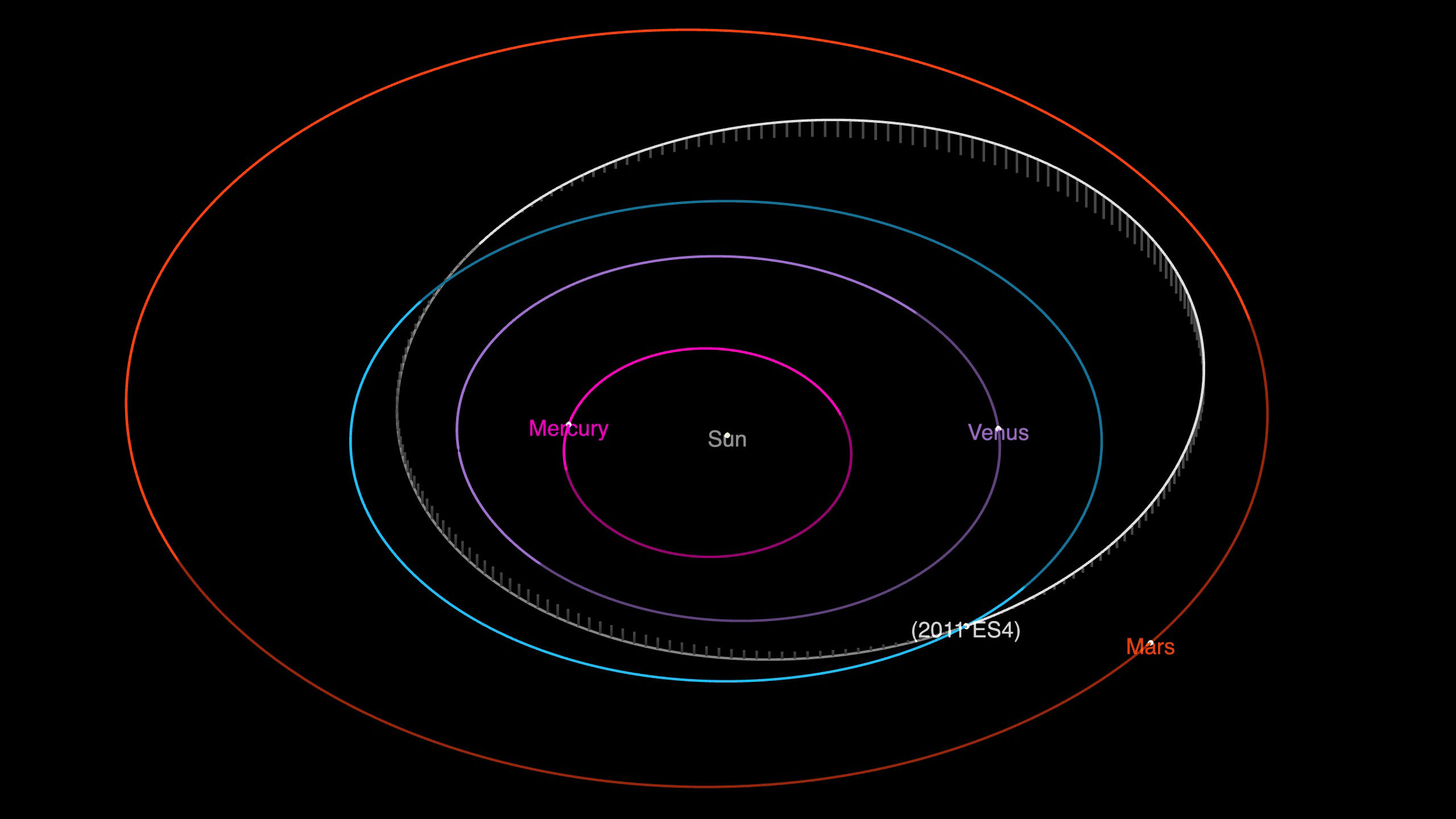An airplane-size asteroid gives Earth a close shave
It poses no threat to our planet, though.
An asteroid the size of a jumbo jet will have a close encounter with Earth today (Sept. 1), zooming past our planet at about one-third the average distance to the moon.
Asteroid 2011 ES4 will make its closest approach today at 12:12 p.m. EDT (1612 GMT), according to NASA. At that time, it will be about 75,400 miles (121,000 kilometers) from Earth. Because the object's orbit isn't well known, it could pass even closer than that, at a distance of just 45,400 miles (73,000 km), NASA added.
"Will asteroid 2011 ES4 hit Earth? No!," NASA's Asteroid Watch outreach arm wrote on Twitter. "2011 ES4's close approach is 'close' on an astronomical scale but poses no danger of actually hitting Earth."
The asteroid measures somewhere between 72 feet to 161 feet in diameter (22 to 49 meters), or about the size of a commercial airliner. During its close approach, it will be traveling at a speed of 18,253 mph (29,376 kph).
Video: Airplane-size asteroid to fly close to Earth - Orbit animation
Related: Potentially dangerous asteroids (images)

Asteroid 2011 ES4 was discovered by astronomers using the Mount Lemmon Survey at the University of Arizona on March 2, 2011, less than two weeks before the space rock's first known flyby of Earth.
But astronomers were only able to observe the asteroid for four days before it became too faint, and it has not been directly observed since, according to EarthSky.org. This lack of observation data means that there is some uncertainty when it comes to calculating its exact trajectory.
Get the Space.com Newsletter
Breaking space news, the latest updates on rocket launches, skywatching events and more!
Related: No, an asteroid will not hit Earth the day before Election Day
Will #asteroid 2011 ES4 hit Earth? 🌎 No! 2011 ES4’s close approach is “close” on an astronomical scale but poses no danger of actually hitting Earth. #PlanetaryDefense experts expect it to safely pass by at least 45,000 miles (792,000 football fields) away on Tuesday Sept. 1.August 28, 2020
Although this asteroid has been known to astronomers for almost a decade, plenty of asteroids that fly by Earth go undetected until the last minute — or remain unknown until after the flyby has happened. For example, two weeks ago the newfound asteroid 2020 QG made the closest near-miss on record, and it wasn't discovered until six hours later.
Email Hanneke Weitering at hweitering@space.com or follow her on Twitter @hannekescience. Follow us on Twitter @Spacedotcom and on Facebook.
Join our Space Forums to keep talking space on the latest missions, night sky and more! And if you have a news tip, correction or comment, let us know at: community@space.com.

Hanneke Weitering is a multimedia journalist in the Pacific Northwest reporting on the future of aviation at FutureFlight.aero and Aviation International News and was previously the Editor for Spaceflight and Astronomy news here at Space.com. As an editor with over 10 years of experience in science journalism she has previously written for Scholastic Classroom Magazines, MedPage Today and The Joint Institute for Computational Sciences at Oak Ridge National Laboratory. After studying physics at the University of Tennessee in her hometown of Knoxville, she earned her graduate degree in Science, Health and Environmental Reporting (SHERP) from New York University. Hanneke joined the Space.com team in 2016 as a staff writer and producer, covering topics including spaceflight and astronomy. She currently lives in Seattle, home of the Space Needle, with her cat and two snakes. In her spare time, Hanneke enjoys exploring the Rocky Mountains, basking in nature and looking for dark skies to gaze at the cosmos.









